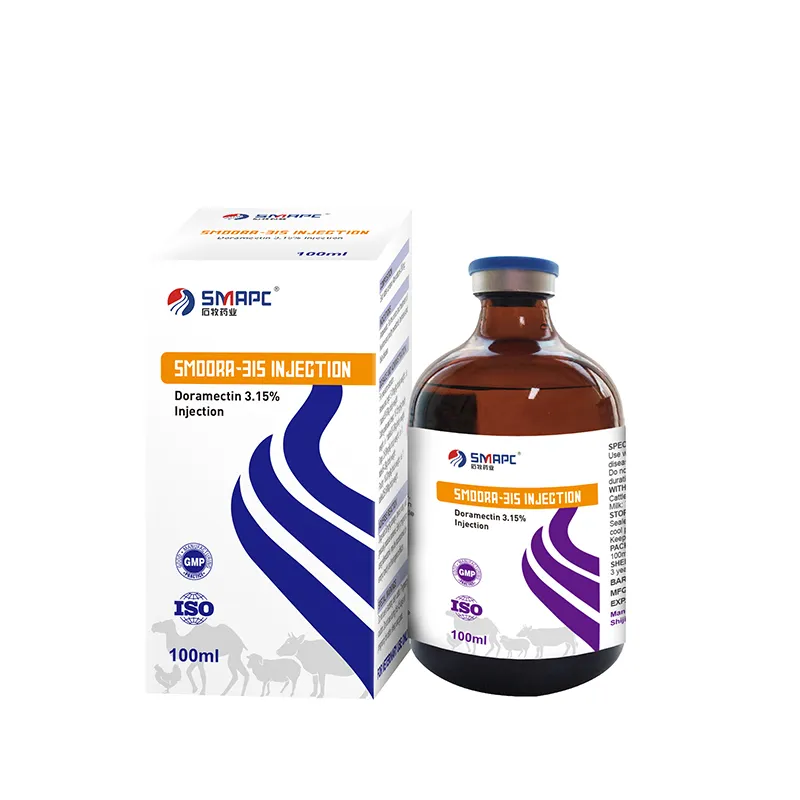Aug . 06, 2024 13:57 Back to list
Effective Treatments and Medications for Managing Pneumonia in Cattle Stock Health and Productivity
Medicine for Pneumonia in Cattle
Pneumonia in cattle, commonly referred to as bovine respiratory disease (BRD), is a significant cause of morbidity and mortality in the cattle industry. It primarily affects young cattle, especially calves, and can result from a combination of viral and bacterial infections, environmental stressors, and inadequate nutritional status. Due to the economic impact of this disease, understanding effective medical treatments and preventative measures is crucial for cattle ranchers and veterinarians alike.
Understanding Pneumonia in Cattle
BRD is multifactorial, meaning that it arises from various factors working in combination. Respiratory pathogens, such as Mannheimia haemolytica, Pasteurella multocida, and Histophilus somni, often cause secondary infections following a viral infection, such as infectious bovine rhinotracheitis (IBR) or bovine respiratory syncytial virus (BRSV). Environmental factors like overcrowding, poor ventilation, sudden temperature changes, and inadequate nutrition can weaken the immune system of cattle, making them more susceptible to pneumonia.
Calves aged between six weeks and six months are particularly vulnerable, as their immune systems are still developing. Symptoms of pneumonia in cattle include coughing, nasal discharge, labored breathing, fever, loss of appetite, and lethargy. Prompt diagnosis and treatment are essential to prevent severe complications or death.
Medical Treatments Available
Treatment of pneumonia in cattle typically involves the use of antibiotics to combat the bacterial infections that often accompany viral respiratory disease. Commonly used antibiotics include oxytetracycline, florfenicol, and tildipirosin, which have been shown to be effective against the bacterial pathogens associated with BRD. The choice of antibiotic can depend on the severity of the infection, the age of the animal, and milk withdrawal times if the animal is in a lactating herd.
In addition to antibiotics, anti-inflammatory drugs, such as non-steroidal anti-inflammatory drugs (NSAIDs), are frequently administered to reduce fever and inflammation in the lungs. Flunixin meglumine is one such NSAID that helps alleviate pain and improve overall well-being in afflicted cattle. Moreover, in severe cases, corticosteroids may be prescribed to reduce inflammatory responses and assist in recovery.
medicine for pneumonia in cattle

Preventative Measures
While medical treatment is essential, prevention of pneumonia in cattle is equally important. A multifaceted approach should be employed, focusing on husbandry practices, nutrition, and vaccination programs to reduce the incidence of BRD.
1. Proper Housing and Environment Ensuring adequate ventilation and space can help minimize stress and reduce the risk of disease spread within a herd. Eliminating excessive moisture and drafts in barns can also create a healthier environment for cattle.
2. Nutritional Support Nutritional quality plays a vital role in maintaining the immune health of cattle. Providing high-quality feed that meets the nutritional needs of the animals promotes better overall health and resistance to disease.
3. Vaccination Implementing a robust vaccination program can protect cattle against viral pathogens that predispose them to secondary bacterial infections. Vaccines against IBR, BRSV, and other respiratory viruses are key components of a preventative strategy.
4. Stress Reduction Minimizing stress during weaning, transport, and handling can help reduce the likelihood of respiratory diseases. It is beneficial to introduce gradual changes in a calm manner to lessen anxiety in cattle.
Conclusion
Pneumonia in cattle remains a major concern for farmers and veterinarians due to its impact on animal health and economic viability. Understanding the medical treatments available, alongside implementing effective preventative measures, is essential in managing and reducing the incidence of BRD. Through diligent management practices and proactive health care, the risks associated with pneumonia in cattle can be significantly mitigated, leading to healthier herds and improved productivity in the cattle industry.
-
Vital Solutions for Healthy and Productive SwineNewsJul.08,2025
-
Veterinary Powder Is VitalNewsJul.08,2025
-
Understanding Prescription Drugs for AnimalsNewsJul.08,2025
-
Understanding Poultry MedicineNewsJul.08,2025
-
The First Line of Defense in Animal HealthNewsJul.08,2025
-
Role of Veterinary Drug in Modern Animal HealthcareNewsJul.08,2025
Products categories







